Best fast-growing climbing plants: 10 vines to cover vertical spaces quickly
Our favorite fast-growing climbing plants will fly up their supports to quickly cover unsightly boundaries, adding privacy and interest with foliage and flowers


Fast-growing climbing plants come as evergreen vines, which provide coverage all year round, and deciduous vines which lose their leaves in the fall. Most are perennial, and come back year after year, while a few are annual vines that grow from spring to fall and then die as winter comes.
Some fast-growing climbing plants are twiners, meaning they cling by twisting themselves round other branches or trellis. Some have tendrils at the ends of their leaves or at the leaf joints, they grip almost anything to support their growth. Some scramble through host plants, often using their thorns to hook over the branches of their hosts. Some have adhesive pads and others develop tiny roots on their stems which cling to stonework, branches and other supports.
But remember that just like fast-growing trees, these speedy climbing plants will not simply stop growing when they have reached the height you want – they may well just keep going.
Screen walls and fences with these 10 fast-growing climbing plants
Whether you're looking to hide an unsightly fence from view or want to add color and interest to a garden structure, these fast-growing climbing plants will do all that and more.
1. Ornamental Kiwi Vine (Actinidia kolomikta)

- Hardiness: USDA Z4 (RHS H5)
- Rate of growth: 2-3ft (60-90cm) per year
- Height after 10 years: 15-20ft (4.5-6m)
This bold, large-leaved, deciduous twining vine has the unique feature of its leaves being green, but with the outer half white, tinged with pink. On young plants, the leaves may be entirely green and the white and pink coloring only develop after a few years. There are also small fragrant, white flowers that open in early summer.
Male and female flowers open on separate plants and one of each is needed to be sure of the edible, sweet, 1in (2.5cm) greenish yellow fruits developing. Check with your supplier if you want to have fruits. An alternative option to try is the edible Kiwi fruit, Actinidia deliciosa.
If your backyard is lacking in interest, there are also plenty of fast-growing shrubs that you can plant to add impact quickly.
2. Trumpet Vine (Campsis radicans)
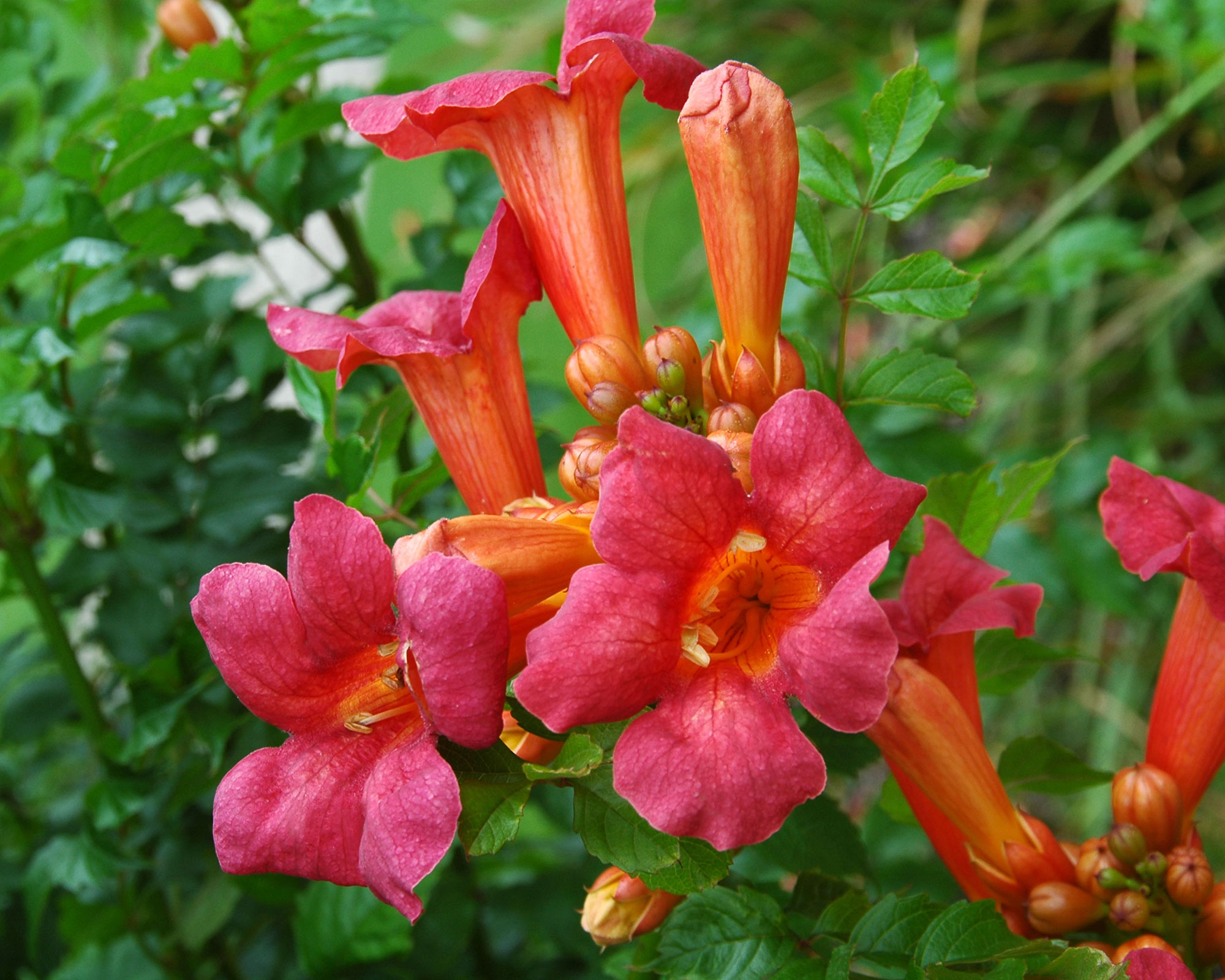
- Hardiness: USDA Z4 (RHS H4)
- Rate of growth: 3-4ft (90cm-1.2m) per year
- Height after 10 years: 25-30ft (7.5-9m)
A flamboyant, deciduous, fast-growing climbing plant that climbs using tiny roots that develop anywhere that a stem touches a support (in the same way as ivy).
The large, dark leaves are rather like large rose leaves and, in late summer and fall, orange and scarlet trumpets open in clusters at the tips of the shoots. It is so popular with hummingbirds that it is sometimes known as the hummingbird vine.
Happy in most soils, suckers may appear at the base and, unless removed, this fast-growing plant will spread sideways as well as upwards! Flowers best in full sun, which it may not get until it reaches the tops of its supports.
3. Mountain clematis (Clematis montana)
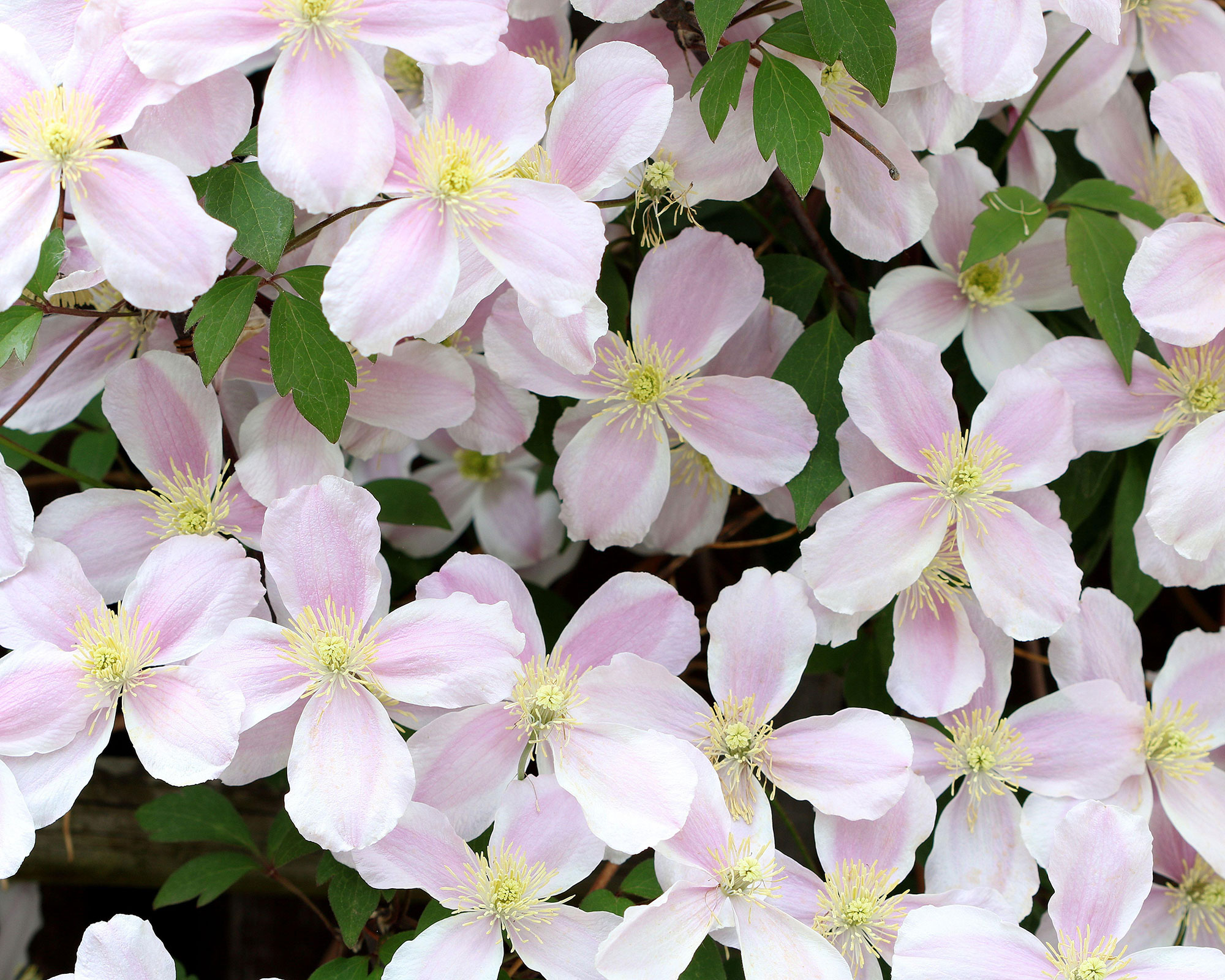
- Hardiness: USDA 4 (UK H5)
- Rate of growth: 10-15ft (3-4.5m) per year
- Height after 10 years: 30-65ft (10-20m)
This fast-growing clematis brings us large clusters of 2-3in (5-7.5cm) flowers in pink or white, creating a dramatic display in late spring.
Clinging very effectively to tree branches with its twisting leaf stalks, as it reaches good light at the top of its host tree flowering becomes more prolific creating an impressive feature from quite a distance.
Choose the planting site carefully as growth is so vigorous that pruning to keep it to size becomes a problem.
If you prefer an evergreen option, clematis armandii is a good choice, but it is less hardy.
4. Orange peel clematis (Clematis tangutica)
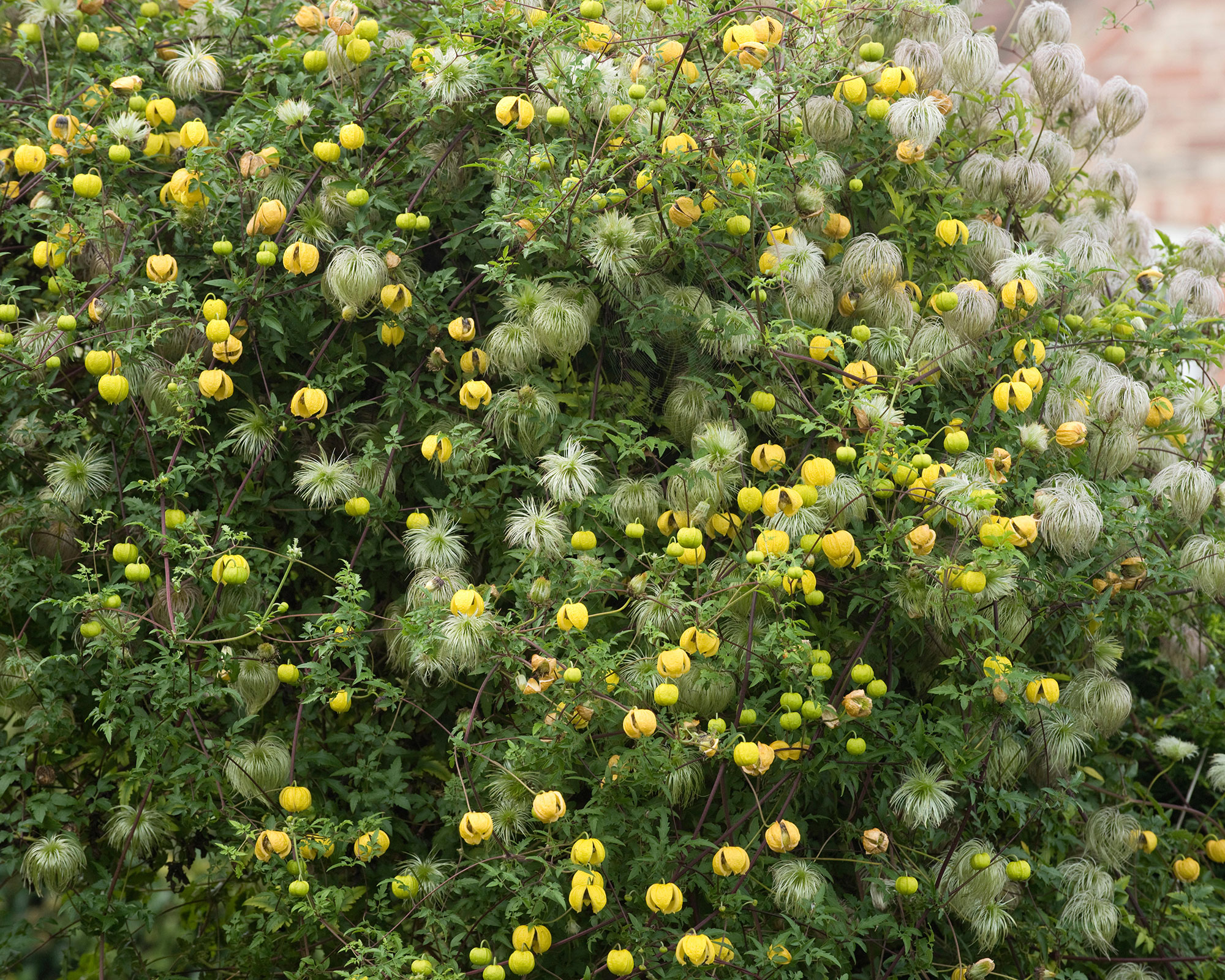
- Hardiness: USDA Z5 (RHS H6)
- Rate of growth: 3-4ft (90cm-1.2m) per year
- Height after 10 years: 15-20ft (4.5-6m)
Clematis come in a vast variety of shapes and sizes, but the one that best combines fast growth with colorful flowers is the summer and fall flowering, deciduous orange peel clematis.
Its prettily divided, slightly bluish green leaves make the perfect background for the 2in (5cm), four petalled orange-yellow flowers followed by large silvery seedheads. It clings by tendrils.
Happy in most soils that are not dry or waterlogged, but it may need watering to help it get settled if planted to grow into a tree. Responds well to hard spring pruning if it gets out of hand. Our guide on how to prune clematis has lots of tips on how to do this properly.
5. Morning Glory (Ipomoea ‘Heavenly Blue’)
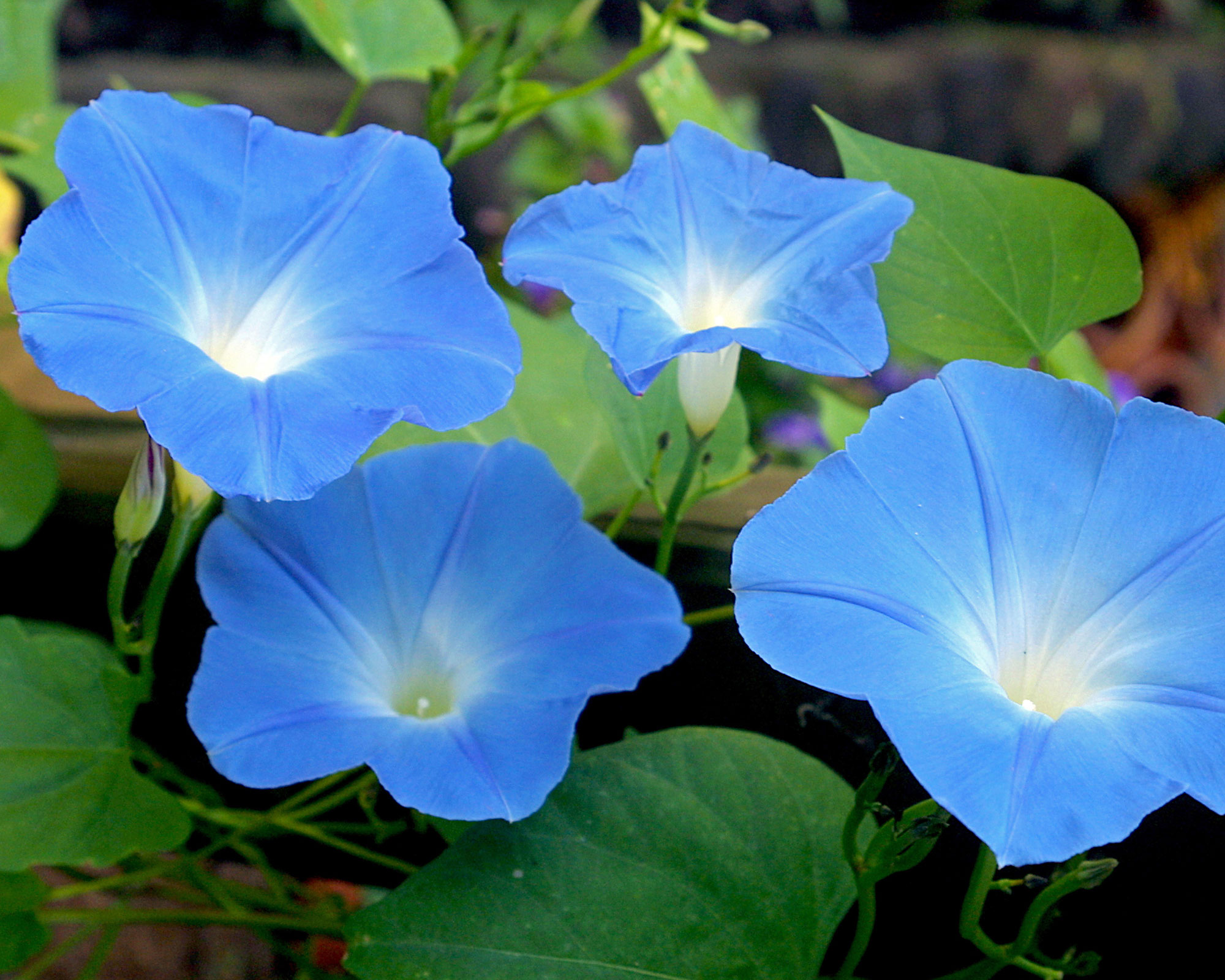
- Hardiness: USDA 4-10 (UK H7)
- Height in one season: 6-10ft (1.8-3m)
The flowers of this gorgeous twining annual open in early morning and usually close in the afternoon, but keep on coming all summer.
The experts at Burpee tell us: 'Magnificent 4-5in (10-12.5) cheerful blooms are bright sky blue. Fast-growing, climbing large vines are spangled with dazzling azure blue trumpet blooms, complemented by attractive heart-shaped foliage. Easy-growing plants carry on the florific show from early summer to early fall.'
An easy-to-grow annual flower, seeds need starting in the sunroom or conservatory in cooler zones but can be started where they are to flower in the warmer climates.
If you're looking for a hardier option, it's worth considering Ipomoea ‘Grandpa Otts’ with purple trumpets.
6. Poet’s Jasmine (Jasminum officinale)

- Hardiness: USDA Z7 (UK H5)
- Rate of growth: 2-3ft (60-90cm) per year
- Height after 10 years: 16-23ft (5-7m)
One of the most beautifully scented of all fast-growing climbing plants, the handsomely divided leaves of this deciduous, twining jasmine are dark green and set off the flowers well. At the ends of the new growth in summer and fall, clusters of fragrant white flowers open from pink-tinted buds over many weeks.
Stephen Lacey, in his book Scent In The Garden, wisely remarks: 'Before you plant it near the patio, consider whether you really want to be drowned in its scent. Would it be better wafting towards you on the evening breeze from another part of the garden?'
Happy in most soils, it will flower most prolifically when the shoots reach the sun, making it a good option for your vertical garden ideas. May be cut back in hard winters.
Another white-flowering but less hardy option is Jasminum polyanthum.
7. Passion Flower (Passiflora)
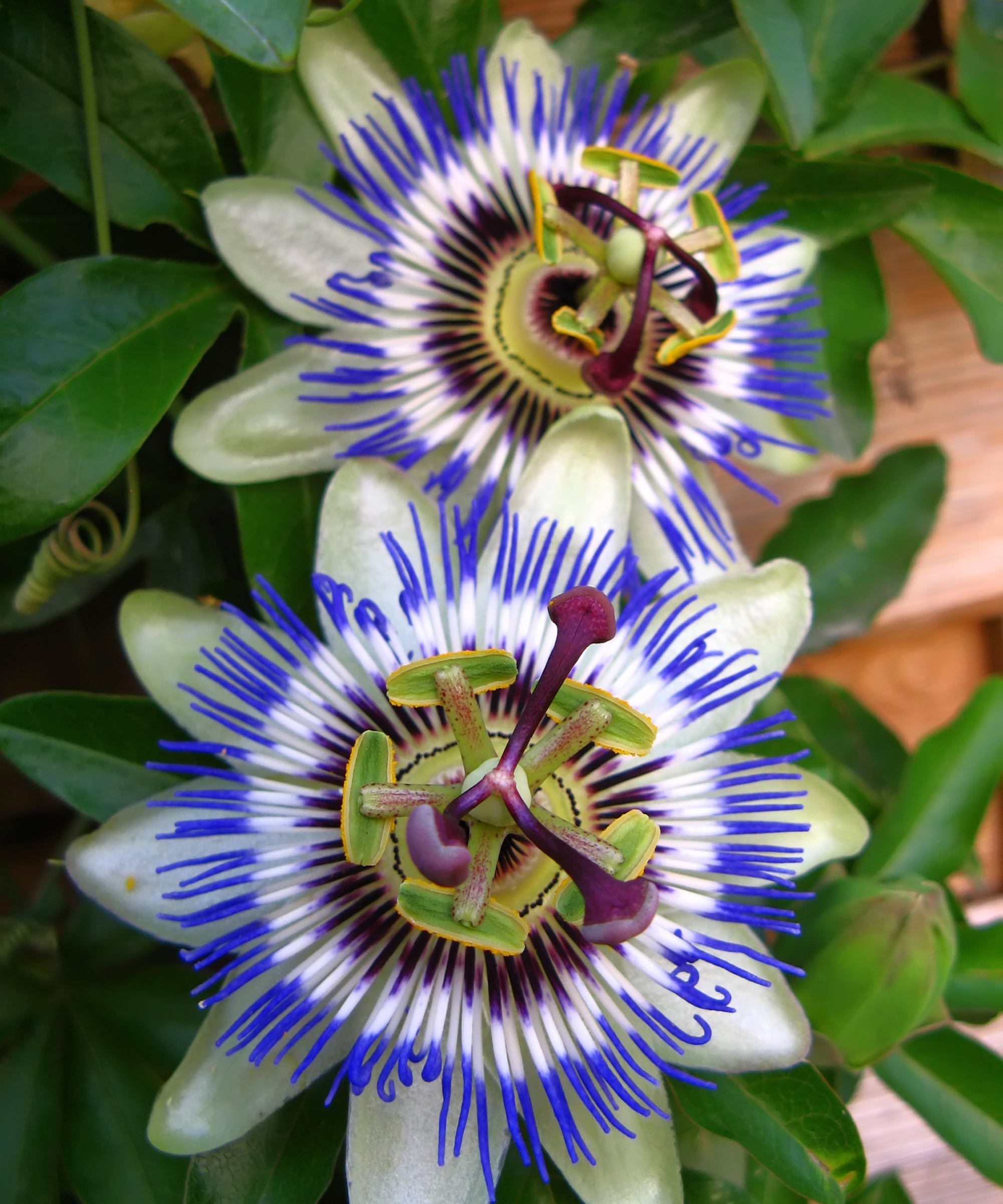
- Hardiness: USDA 7-10 (UK H1-8)
- Rate of growth: 2-3ft (60-90cm) per year
- Height after 10 years: 16-23ft (5-7m)
One of the top plants for covering walls, these astonishing, very vigorous, tropical and subtropical vines, supporting themselves by clinging with tendrils, are famous for their uniquely complex and beautiful flowers and for their succulent fruits.
The name, passion flower, derives from the Christian symbolism in which a resemblance is seen between the objects associated with the Passion of Jesus and the various parts of the flower.
The flowers are followed by large, juicy, fruit, full of pup and seeds, that mature to orange or purple and must be left on the vine to ripen.
Hardiness varies, so check that the variety you would like to grow is hardy in your area.
Passiflora edulis is the one usually eaten, Passiflora caerulea is the most winter hardy.
8. Rambling Rose (Rosa ‘Kiftsgate’)
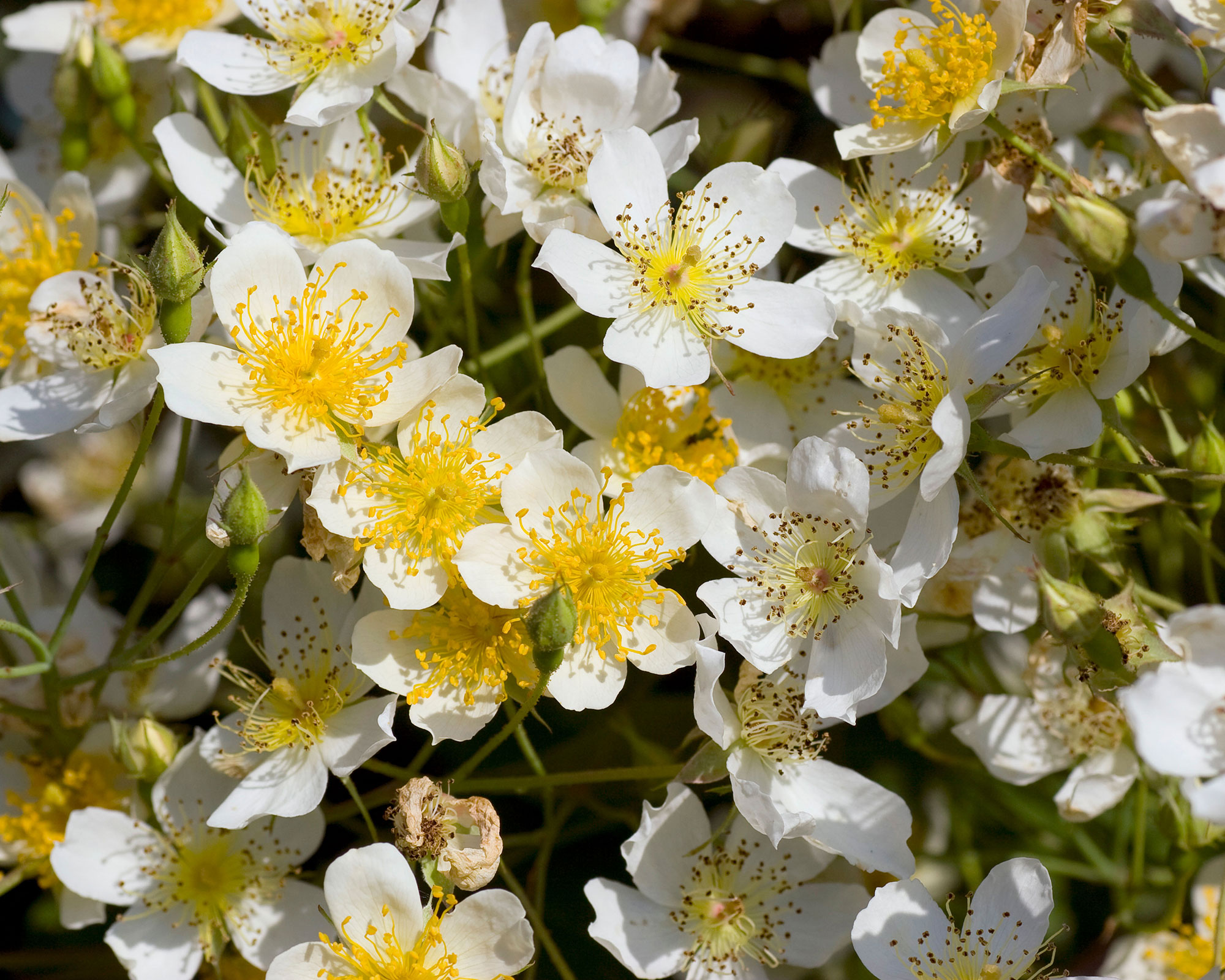
- Hardiness: USDA 4-10 (UK H7)
- Rate of growth: 4-5ft (1..2-1.4m) per year
- Height after 10 years: 30-40ft (9-12m)
Rambling roses are vigorous, often very thorny, roses that support themselves by the thorns hooking on to the shrubs and trees through which they scramble.
Usually flowering just once, in early summer, ‘Kiftsgate’ has clusters of a hundred or more small, white, single, fragrant flowers that are followed by small orange hips. Spectacular in full flower, and loved by birds in fall, the original is now 70 years old and 80ft (25m) tall!
Think twice before planting this exceptionally vigorous type of rose, as its weight can sometimes damage the branches of its host tree. For something similar but slightly smaller, try ‘Bobbie James’, which grows to half the height.
9. Ornamental Vine (Vitis coignetiae)

- Hardiness: USDA 5 (UK H5)
- Rate of growth: 3-4ft (90cm-1.24m) per year
- Height after 10 years: 30-40ft (9-12m)
A grape vine that matures to a height of 80ft (25ft) may be impractical as far as picking the fruits is concerned, but the large leaves up to 12in (30cm) across develop the most dramatic crimson and scarlet coloring in fall.
Clinging by tendrils that support its growth to the tops of forest trees, it is a spectacular sight. It's also a great addition to a wildlife garden as the small black fruits are much valued by birds and small mammals.
The best fall foliage color is produced when its roots compete with other plants, so planting amongst tree roots is ideal both for support and for the best fall color.
As an alternative, ‘Brandt’ grows a little less strongly, and has wine red fall color.
10. Wisteria (Wisteria frutescens)
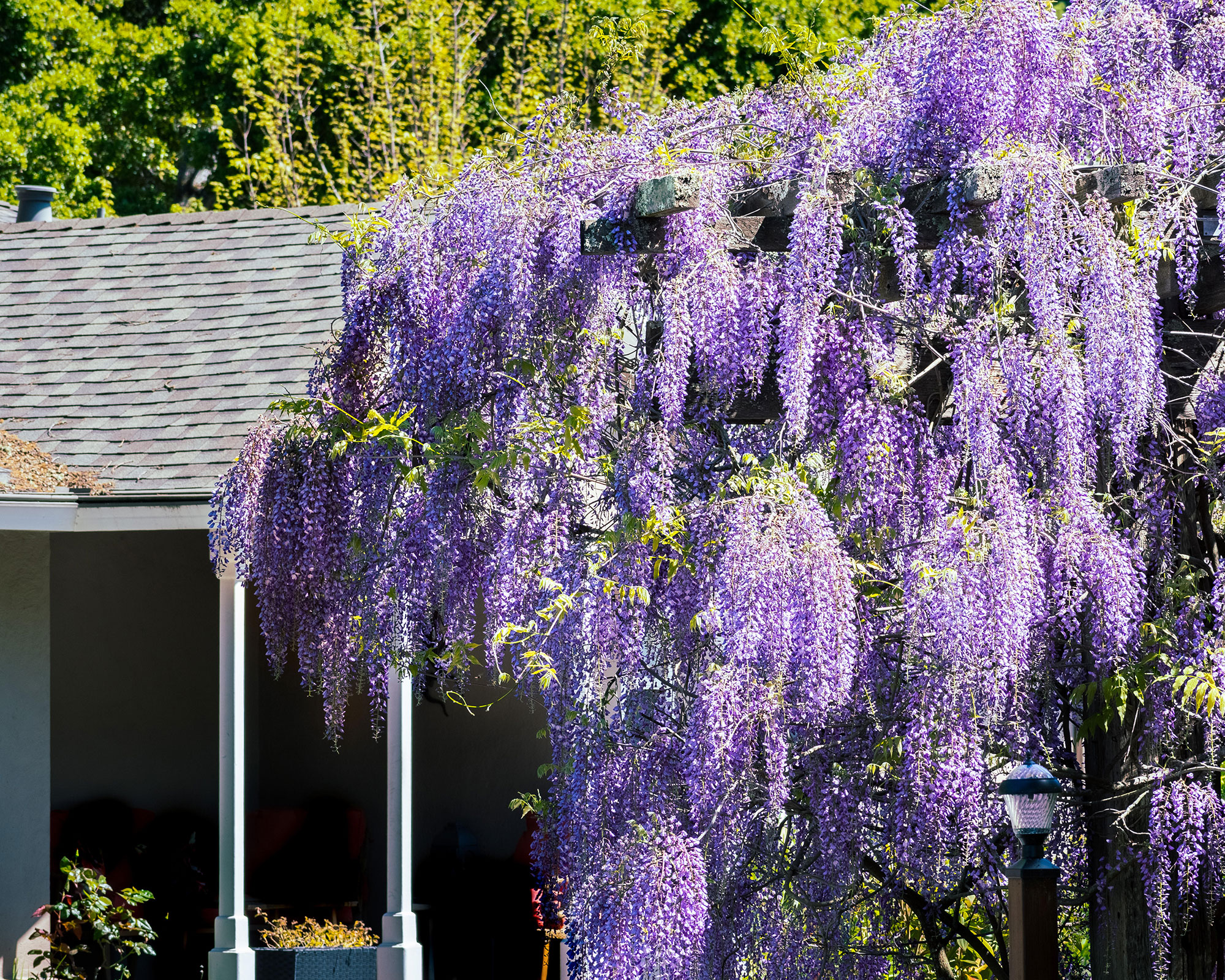
- Hardiness: USDA 5 (UK H5)
- Rate of growth: 5-8ft (1.5-2.4m) per year
- Height after 10 years: 65ft (20m)
The American wisteria is a spectacular American native twining vine with exceptionally long shoots that soon climb trees or smother tumbledown buildings.
The dangling 12in (30cm) strings of fragrant, pale lilac, pea-like early summer and mid summer flowers are followed by pods like those of pole beans. It may need guiding in the right direction at first, but will soon find its way.
It's less vigorous than the Chinese wisterias, Wisteria floribunda and Wisteria sinensis, but these are exceptionally invasive plants in many areas of the US and should not be planted. Do not be tempted.
‘Amethyst Falls’ is a form that is more prolific and a deeper color.
How can I get fast-growing climbing plants off to a good start?
Just like fast-growing hedges, many fast-growing climbers naturally grow like rockets, but there are still a few things you can do to help ensure they fly up their climbing plant supports at top speed.
There are two things to keep in mind. Prepare well, and make sure the new growth heads in the right direction.
So do not simply dig a hole a fraction bigger than the pot your vine came in, drop it in and forget about it. Thorough preparation will set your vine off growing well. Dig a hole about 2ft (60cm) across and fork over the soil in the base. Half fill the hole with garden compost, work it into the soil and firm well. Remove the vine from its pot and set it into the hole – add or remove soil so that the top of the root ball is just below the general soil level.
Fill in with a mix of soil and compost, firm well, water in with liquid fertilizer promptly after flowering, and ensure that the roots stay moist until the plant is well established. Mulching with weed-free compost or bark is also a good idea.
Some fast-growing climbing plants can be a little slow to get started, so their new stems might need guiding in the right direction to get them started.

Which is the fastest-growing climbing plant for shade?
The large leaved ivies grow very strongly once they’ve settled in, even some of the attractive variegated varieties will cover a great deal of space quickly – if they have a tree trunk on which to cling.
Look for varieties of the Algerian ivy, Hedera algeriensis (USDA Z8, RHS Z5), such as silver edged ‘Gloire de Marengo’ and also varieties of Persian ivy, Hedera colchica, such as ‘Sulphur Heart’ with its bold yellow splash on each leaf.
Climbing hydrangeas, Hydrangea anomala subp. petiolaris, (USDA Z4, RHS Z5), with its white lacecap flowers grows strongly on a shady garden wall after a slow start.
If you're looking for fast-growing vines with golden coloring, the gold hop, Humulus lupulus ‘Aureus’ (USDA Z5, RHS Z6), twines well in shade, although the foliage can be more chartreuse than gold where light is limited. It dies down in winter but surges into growth again in spring.
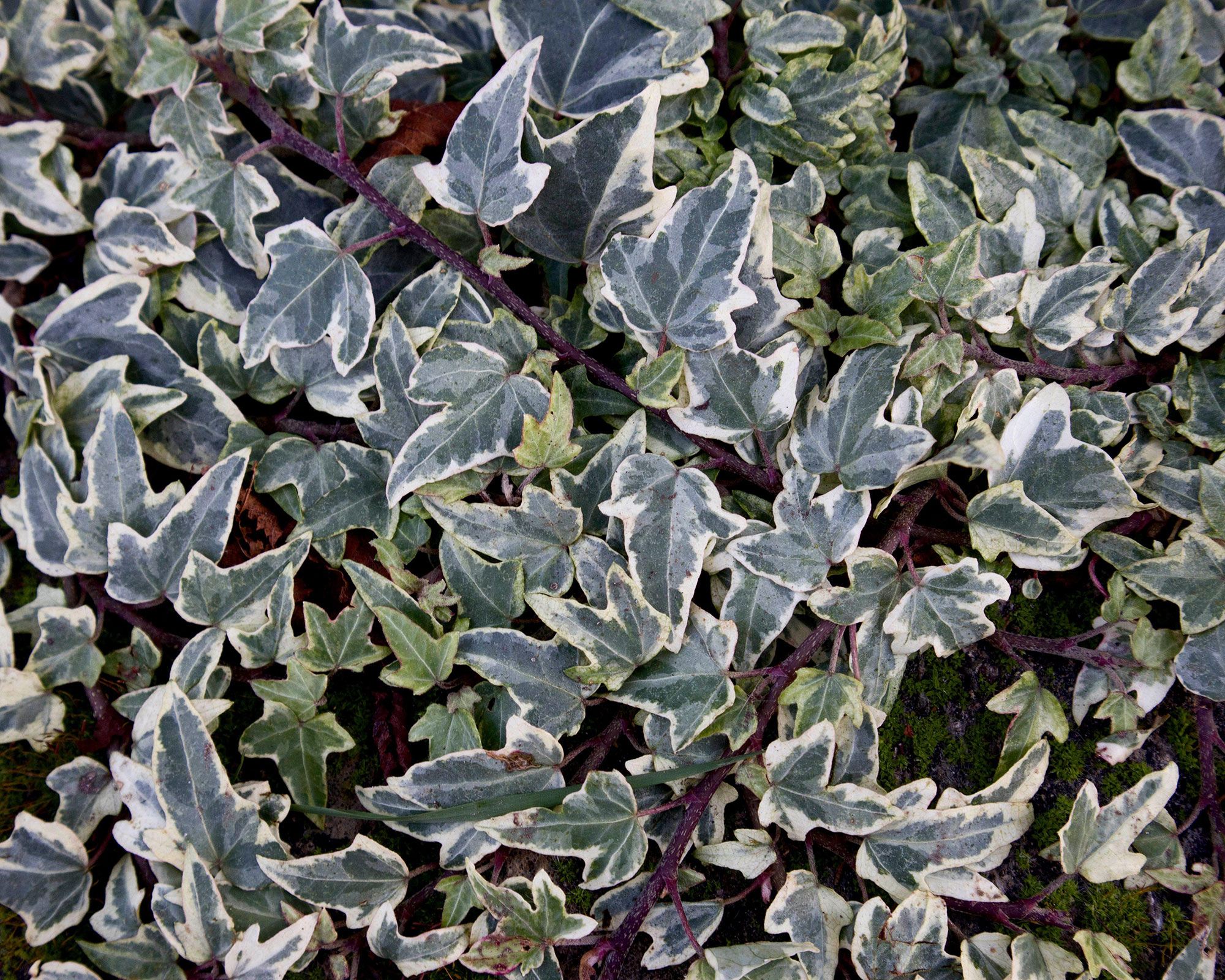

Graham Rice is a garden writer who has won awards for his work online, and in books and magazines, on both sides of the Atlantic. He is a member of a number of Royal Horticultural Society committees and the recipient of the 2021 Garden Media Guild Lifetime Achievement Award.
